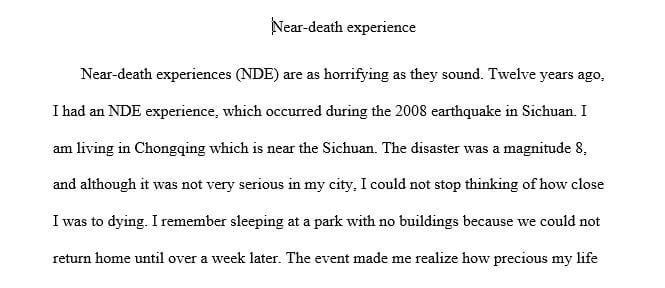What are the implications of the differences in execution between your two texts
Project Description
One way to understand different perspectives on an issue is to conduct a rhetorical analysis of texts–spoken or written. Rhetorical analysis is a way of analyzing what the text can tell us not only about the subject and argument strategies but also about the interrelationship among the writer, the audience, the genre and arguments as well as the cultural values of the writer and of the knowledge community.
For this writing project, write a rhetorical analysis essay (a kind of critical analysis essay) that examines an argument about various issues and controversies. Start by identifying a text that presents an argument that matters to you. The text can be of any genre–including newspaper editorial, opinion sections of newspapers or magazines, blogs, websites, advertisements, signs, posters, and so on. (Keep in mind that analyzing short texts could require more effort in interpreting and explaining the text and its context.)
Once you have identified the text for analysis, explore the text and its context by considering the following questions: What is the writer’s purpose in writing the text? What kind of situation is the text responding to? Who is the writer? How does the writer establish his or her credibility? What is the writer’s attitude toward the subject? How do you know? Who is the primary audience? Who is the secondary audience? What is the major argument and how is it being built? What are some of the supporting arguments? What other arguments or perspectives are represented? What is the genre and what are some of the characteristic features that are expected? What are the characteristics that are actually found in the text? Is the text effective in communicating the main point to the audience? What can you say about the values and assumptions that are shared by members of the knowledge community?
In addition to analyzing the text itself, you may also find it useful to find out about the medium in which the text was presented. Explore these and other related questions thoroughly to generate ideas for your writing.
What this project asks you to do:
You are going to analyze the effectiveness of the rhetorical tools used in each source in your topic. Choose a topic that contain controversies or issues. After your preliminary search on your topic, you will find two separate arguments that address the same issue. Choosing two texts (one article and one visual source) that use the same stance will make your job much easier. In this paper, you will use rhetorical tools to explain how the texts’ argument ‘works,’ and will contrast the methods each text uses. (If the images and texts are different, then the arguments will obviously work differently—even if they have the exact same subject matter…).
Questions to consider in your analysis:
●How much does this text rely on its audience experiencing certain emotions? Which?
●Does the argument use logical fallacies? Which?
●What are the roles of logos, pathos, and ethos in the argument?
● What are the implications of the differences in execution between your two texts?
●What does the argument indicate about effective rhetorical appeals?
●In terms of what ‘works’ and what doesn’t in this argument, what does this tell you about social codes and our cultural values?
Note: You must explicitly use the terms logos, pathos, and ethos in your paper.
Your paper, because it is a rhetorical analysis, should include:
❖Brief explanation of why these two texts are interesting/worth examining, and how they relate to one another
❖Claim as to whether the texts are effective or ineffective, based upon elements of their rhetorical strategy
❖Identification of the texts being examined, and a summary of their main ideas
❖Presentation of key points in the text’s rhetorical strategies for persuading its audience*
❖Explanation of which points are most crucial to the argument’s effectiveness/ineffectiveness*
❖Presentation of new knowledge about the effectiveness of the argument based on the analysis
About the author & the topic(eg: degree)
2.Organization, Structure
3. Rhetorical appeals: Logos, Pathos, and Ethos (What made this article persuasive?)
4. The contents: The stance of the author, and your interpretation, Target audience
5. Visual elements
6. Strength and weakness in the paper
Note: You must explicitly use the terms logos, pathos, and ethos in your paper
use four or five academic citations and one citation from youtube(the audi commercial ad which i sent to you)
for the introduction, you can talk about the experience i have as hook. i have experienced an erthquake happened in sichuan 2008, 8 magnitude. i was living in a city near sichuan. not that dangerous but still scared and felt death anytime. we slep at the park which has no building and didn’t go back home for one week. nonforgetable. after that, i studied very hard because i valued my life. although it didin’t last for a long time, i was so lazy. but at least it worked for that period. so i believe the near death experience must be something helpful for our brain.
Answer preview to what are the implications of the differences in execution between your two texts
APA
1563 words


